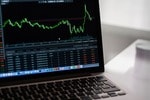
Nio Vs Rivian Stock, Which EV Is Best?
Nio (NYSE:NIO) and Rivian (NASDAQ:RIVN) are two EV startups that…


Nio (NYSE:NIO) and Rivian (NASDAQ:RIVN) are two EV startups that…

Sweetgreen (NYSE:SG) is an up-and-coming quick service restaurant chain focused…

Alcoa (AA) is a global leader in aluminum production. Based…
Market Cap: $2.8T
P/E Ratio: 31x
Market Cap: $2.7T
P/E Ratio: 30x
Market Cap: $2.3T
P/E Ratio: 32x
MicroSectors Gold Miners 3X Leveraged ETN [GDXU] is down 1.93% over the past day.
Direxion Daily Semiconductor Bear 3X Shares [SOXS] is down 7.07% over the past day.
Direxion Daily Financial Bull 3x Shares [FAS] is down 0.96% over the past day.